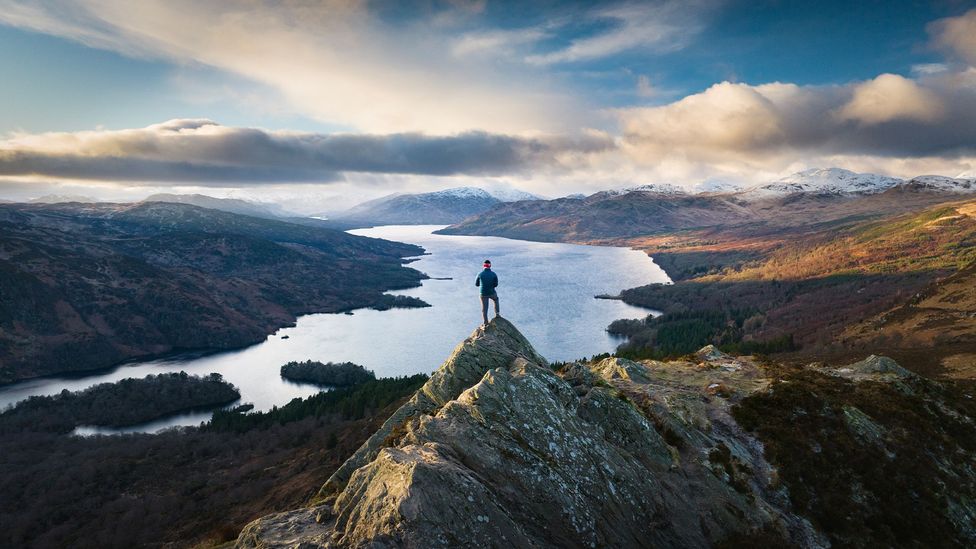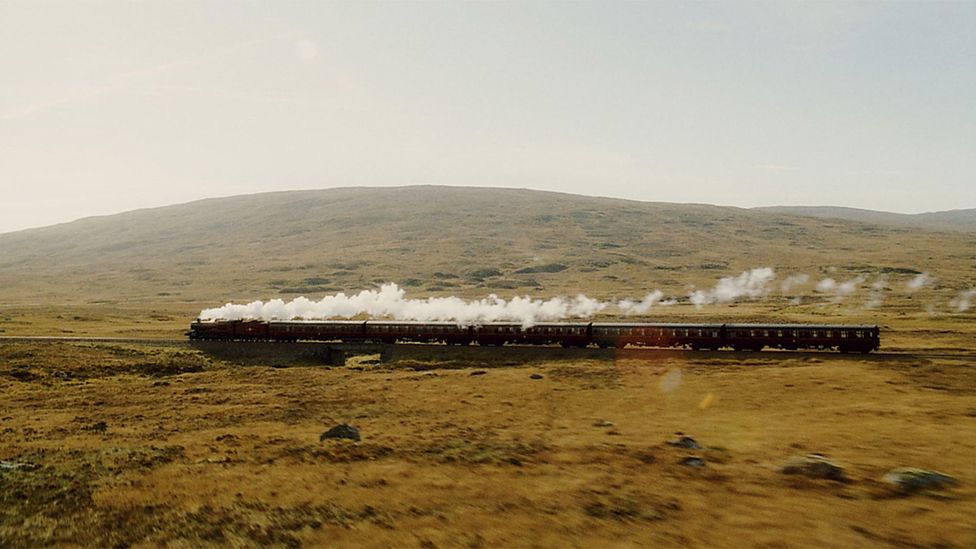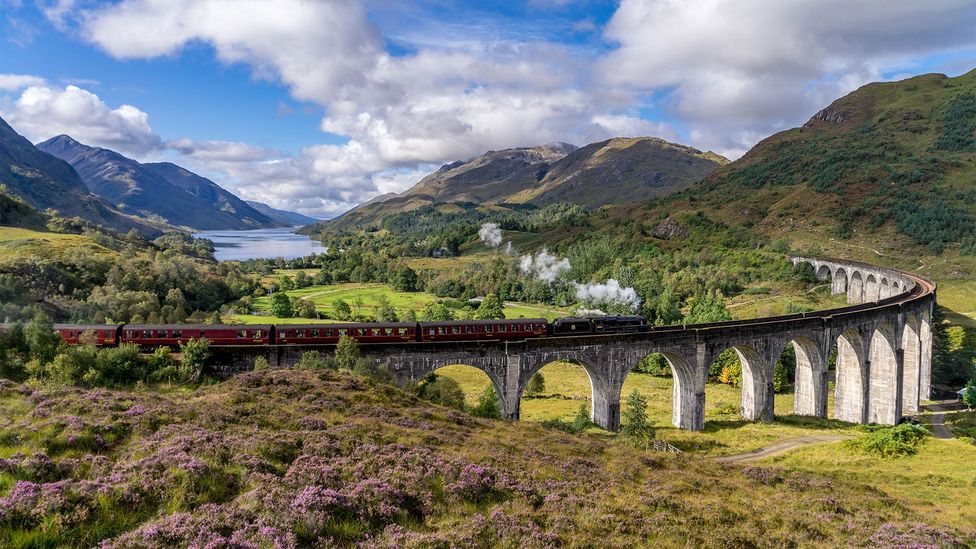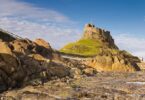Jamie Lafferty
My journey on one of the world’s most scenic train routes started rather unremarkably. The 08:12 from Glasgow to Mallaig required me to begin my day alongside thousands of commuters streaming into Queen Street Station – many of whom clutched coffees and kept their eyes cast down – ahead of another day in the office.
On that bright November morning, I was one of the few looking up, staring instead at the departure board, ready to travel against the tide. There were few clues that what looked like just another ScotRail train might offer magic. For the West Highland Line, there is no private check-in or hidden platform, no red carpet or ceremony. There is only the dispassionate, disembodied voice on the Tannoy announcing that it is time to board. Five-and-a-half hours and 26 stops later, anyone unfamiliar with the landscapes to come will have had an excellent shock.
The West Highland Line trundles from Glasgow’s industrial hub deep into Scotland’s wild western interior, through the Loch Lomond & The Trossachs National Park, past viaducts and train stations featured in the Harry Potter and Trainspotting films, and revealing a remote side of Scotland that few travellers experience.
At Dalmuir, the first stop, a large family brought on a hurricane of children and dogs, throwing my formerly Zen carriage into disarray. Soon after this, though, clues began to emerge that this was not a normal train journey. As Glasgow faded away, tentacles of fog were peeled back from a forest by the dawn light. The topography started to lurch skywards on the right, while on the left of the track, the muddy banks of the River Clyde were filled with wrecked ships and skittish seabirds.

The West Highland Line threads Scotland’s Loch Lomond & The Trossachs National Park (Credit: WLDavies/Getty Images)
There was a final bit of industrial offensiveness in Faslane, where the British government keeps its nuclear weapons uncomfortably close to Scotland’s largest city, but then, all of a sudden, we were in the southern reaches of the Highlands, where all was mirrored lochs and glens stuffed with Scots pine. Morning mist rolled between hills, hiding and then revealing more of this perfect landscape. The dying days of autumn were exceedingly beautiful – and we were just an hour into the journey.
Passengers’ phones and noses were pressed to windows. Some urgently tried to post their experience in real time to social media, but the Wi-Fi signal was weak in the mountains and I didn’t want to miss the extraordinary landscape.
Nearby, an English family from Kent had decided to make a day of it, taking the train all the way to the Highland town of Mallaig where they would spend a couple of hours before taking the same train back, just to enjoy the scenery. Later, father Les Johnson would tell me that travelling in winter when the sun set at 16:07 made the return feel quite tedious, but that the outgoing journey was the most beautiful he’d ever experienced.
Before long, snowy peaks appeared and trees gave way to ruddy moorland. At times, the 96-mile West Highland Way hiking route followed parts of the track. As we continued north, one of the reasons for the lack of forests here made an appearance just outside Rannoch station: a red deer stag. Monarch of the Glen, perhaps, but also a species so overabundant that young trees are struggling to re-establish themselves in this part of the country.
Soon after the Bridge of Orchy, I heard the engine straining as we started to climb higher into the Highlands. Some of the hills were now as treeless as the dark side of Mars, but our elevation wouldn’t be greater than the 408m we reached at Corrour, said to be the highest station in the UK. In this and other remote stops, the train overhung the station at both ends, like a hotdog in too-small bread.

The West Highland Line has been featured in Trainspotting, The Crown and this scene from Harry Potter and the Half-Blood Prince (Credit: Everett Collection Inc Alamy)
Corrour is also one of the stars of the route, having played a part in the film Trainspotting, Danny Boyle’s nightmarish interpretation of Irvine Welsh’s book about Edinburgh heroin addicts. If much of the West Highland Line feels like an advert for Scotland’s beauty, its role in the film is devastatingly grounding. “It’s sh**e being Scottish, we’re the lowest of the low…” lamented Ewan McGregor as the cadaverous Mark Renton.
The track continued past Loch Treig, where a temperature inversion kept the cold water buried under a thick fog, though the view above the frozen peak of Stob Coire Easain was perfectly clear. Soon, wilted ferns and rough-hewn gorges were revealed. “You’ve picked a lovely day for it. At this time of year when the sun is just catching the tops of the moors at Corrour, it’s really perfect,” said conductor Kelsey Macbeth.
The conductor is based in Mallaig and comes from a line of Macbeths who’ve worked on the line – her father and grandfather both drove trains on the same tracks. I asked if she’d heard the news about ScotRail seeking new drivers for this route and she grinned, saying she had. “For the drivers, they get to be upfront looking all around, without any distractions,” she said. “It’s really not a bad commute.”
I looked out of the window, where all the world was still golden. I guessed the weather wasn’t always like this, though? “No! No, some days you can’t even see the grass, let alone the mountains,” Macbeth laughed.

Crossing the Glenfinnan Viaduct is one of the highlights of the rail line (Credit: Georgy Krivosheev/Alamy)
The job description noted its ideal candidate should live in Fort William, the Gortex-swaddled self-styled outdoor capital of the UK. Arriving there required the track to snake between several shops offering coffee and cheap chicken. It’s a practical place, though, one from which thousands of tourists launch hiking and climbing adventures every year. High above, the grim titan that is Ben Nevis, Britain’s highest peak, overlooks the town like a nightclub bouncer.
From here, the train began what some consider its most scenic section, the slow extension to Mallaig, which was laid in 1901. So few people use this part of the line that at three stations – Locheilside, Lochailort and Beasdale – stops must be requested, making the arrival time flexible.
An indisputable highlight along this section is the Glenfinnan Viaduct, which staff took time to announce in a small break from ScotRail’s usual scripted announcements about alcohol and vape bans. Fans of the Harry Potter film franchise often lose their minds at this portion of the 120-year-old line – the Hogwarts Express passes over this old viaduct in several of the movies, and it’s also appeared in The Crown. Macbeth told me that in busier summer months she frequently has requests from adults and children alike to stop the train for photos. This is, of course, impossible.
By the time we left Mallaig at 16:05, the mid-November daylight was already fading, meaning my long journey back to Glasgow happened almost exclusively in the dark. Not much was visible through the window as we started chugging south, but even in the blackness, I knew there was magic out there somewhere.
Courtesy: BBC







